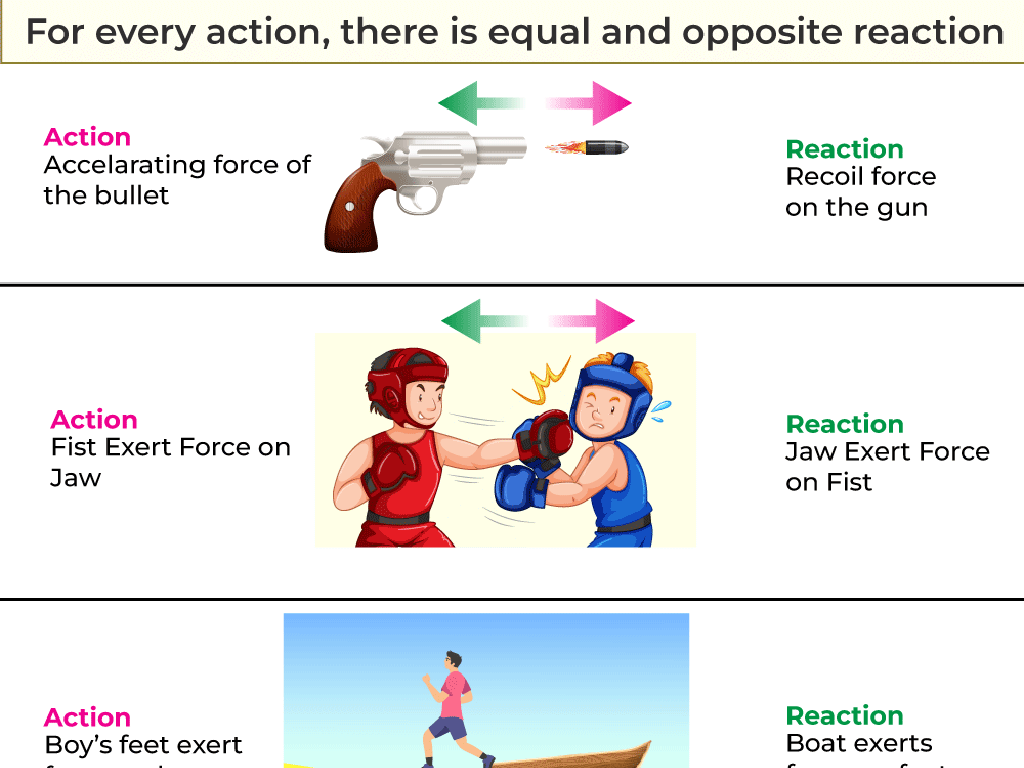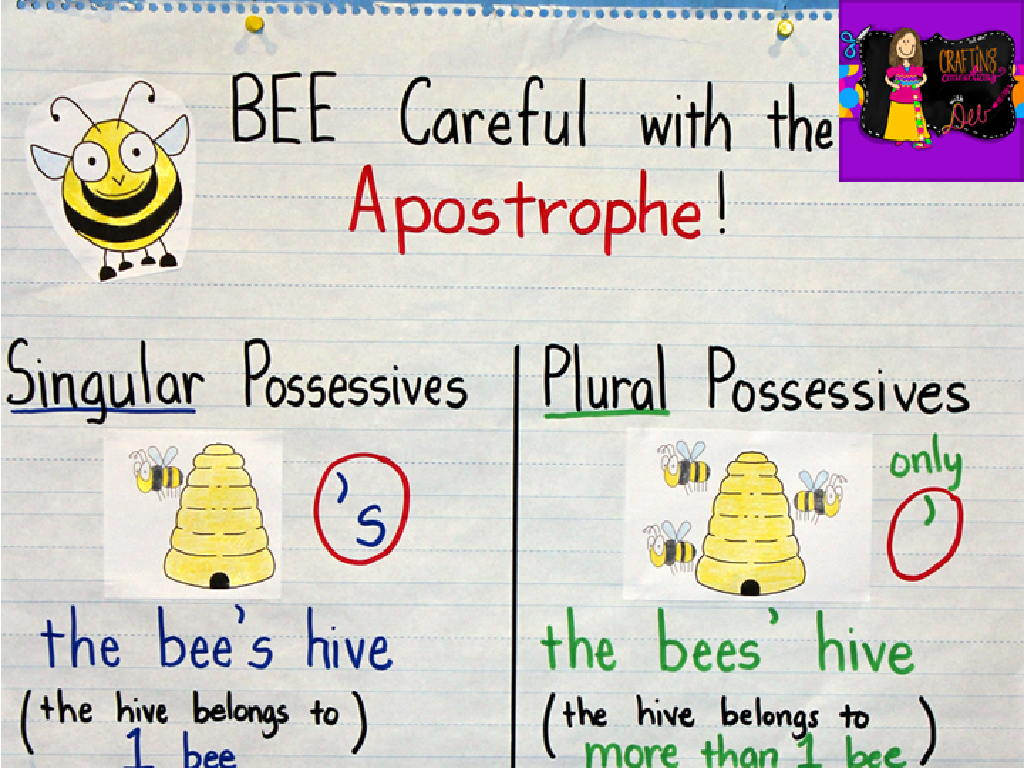Evaluate Multi-Variable Expressions
Subject: Math
Grade: Eighth grade
Topic: Expressions
Please LOG IN to download the presentation. Access is available to registered users only.
View More Content
Evaluating Multi-Variable Expressions
– Understanding variables in math
– Variables represent unknowns or varying quantities
– Expressions in real-world problems
– Expressions can model situations like budgeting or mixing solutions
– Steps to evaluate expressions
– Identify values for each variable, then apply operations in the correct order
– Practice with examples
– Example: For 2x + 3y, if x=2 and y=3, the expression evaluates to 2(2) + 3(3) = 13
|
This slide introduces the concept of evaluating multi-variable expressions, which is a fundamental skill in algebra. Start by explaining that variables are symbols that represent numbers and can change value. Highlight the relevance of expressions in real-world contexts, such as calculating expenses or analyzing data. Walk through the steps of evaluating an expression by substituting values for each variable and then performing the arithmetic operations as per the order of operations (PEMDAS/BODMAS). Provide practice examples for students to try, ensuring they understand the process. Encourage students to ask questions and discuss how changing variable values affects the outcome of the expression.
Understanding Multi-Variable Expressions
– Define multi-variable expression
– An expression with two or more variables, e.g., 2x + 3y = 6
– Examples of multi-variable expressions
– For instance, the area of a rectangle: A = l * w, where l and w are variables
– Variables as unknowns
– Variables like x or y represent numbers we don’t yet know
– Variables can vary
|
This slide introduces the concept of multi-variable expressions, which are fundamental in algebra. Start by defining a multi-variable expression as an algebraic expression that contains two or more variables. Provide examples to illustrate how these expressions appear in mathematical and real-world problems, such as formulas for area, perimeter, or even equations used in science. Emphasize that variables are placeholders for unknown values and can represent different numbers in different situations. Encourage students to think of variables as changeable elements that allow us to solve for unknowns in expressions and equations.
Evaluating Multi-Variable Expressions
– Review PEMDAS order
– Remember: Parentheses, Exponents, Multiplication/Division, Addition/Subtraction
– Apply to multi-variable expressions
– Use PEMDAS in expressions with variables like x and y
– Work through a sample expression
– Example: Evaluate 3x^2(y – 2) when x=1, y=3
– Practice with class activity
|
Begin with a quick review of the order of operations, emphasizing the acronym PEMDAS. Make sure students understand that multiplication and division are performed from left to right, as are addition and subtraction. Next, demonstrate how to apply these rules to expressions that include variables. Work through an example expression step by step, showing how to substitute values for variables and then apply PEMDAS. For the class activity, provide a set of multi-variable expressions for students to solve individually or in small groups. Offer guidance as needed and discuss the solutions as a class afterward. This will reinforce their understanding and ability to evaluate expressions with multiple variables.
Substituting Values in Multi-Variable Expressions
– Steps to substitute variables
– Replace variables with numbers carefully
– Use parentheses when substituting
– Parentheses ensure correct order of operations
– Practice with provided values
– Try substituting x=3, y=2 in 2x + 3y
– Understand substitution importance
|
This slide introduces the concept of substituting values into multi-variable expressions. Emphasize the importance of replacing variables with given numbers accurately, and using parentheses to maintain the correct order of operations, which is crucial for evaluating expressions correctly. Provide practice examples, such as substituting x=3 and y=2 into the expression 2x + 3y, and ask students to calculate the result. Highlight that understanding how to substitute values is essential for solving algebraic equations and real-world problems. Encourage students to work through several examples to become comfortable with the process.
Evaluating Multi-Variable Expressions
– Combine substitution and order of operations
– Substitute values into the expression, then follow PEMDAS
– Evaluate expressions step by step
– Break down the process: substitute, then solve according to PEMDAS
– Class practice with a sample expression
– Example: For x=3, y=2 in expression 2x + 3y, evaluate with the class
|
This slide introduces the concept of evaluating multi-variable expressions by combining substitution with the order of operations (PEMDAS). Start by explaining the importance of substituting variables with given values accurately. Then, guide students through the step-by-step process of solving the expression, emphasizing the correct order of operations. For the class practice, present a simple expression with two variables and work through it as a class. This will help students understand the process and prepare them for more complex problems. Provide several examples with different operations and encourage students to ask questions during the practice session.
Let’s Practice Together: Multi-Variable Expressions
– Interactive class example on the board
– Students substitute values and solve
– For example, if x=3, y=2 in 2x + y, what’s the result?
– Discuss challenges encountered
– Share difficulties in calculation or understanding
– Address any questions from the activity
– Clarify doubts to ensure concept comprehension
|
This slide is designed to engage students in an interactive class activity where they apply their knowledge of evaluating multi-variable expressions. Start with a prepared example on the board and invite students to come up and substitute values for variables and solve the expression. Encourage participation and collaboration among students. After the exercise, open a discussion for students to talk about any difficulties they faced, whether in the substitution process or solving the expression. Address all questions to ensure that students leave the class with a solid understanding of evaluating multi-variable expressions. Prepare to provide additional examples or explanations as needed to clarify any misunderstandings.
Group Activity: Evaluating Multi-Variable Expressions
– Break into small groups
– Each group gets different expressions
– You’ll receive expressions with variables like 2x + 3y when x=1, y=2
– Evaluate your set of expressions
– Use substitution to find the value of the expressions
– Share methods and answers with class
– Discuss how you solved the problems and what answers you got
|
This group activity is designed to foster collaborative learning as students work together to evaluate multi-variable expressions. Divide the class into small groups, ensuring a mix of abilities in each group to promote peer learning. Provide each group with a unique set of expressions involving two or more variables. Encourage students to discuss the substitution method and check each other’s work for accuracy. After the activity, each group will explain their methods and reasoning to the class, allowing for a review and reinforcement of the concept. Possible expressions to distribute include 3a + 4b, 5m – 2n, and x^2 + y^2, with given values for the variables. This will help students understand the practical application of evaluating expressions with multiple variables.
Real-World Applications of Multi-Variable Expressions
– Multi-variable expressions in life
– Budgeting with expressions
– Plan finances by calculating expenses and income variables
– Coding uses expressions
– Variables in programming control actions and store data
– Engineering and expressions
– Solve complex problems by representing forces, speeds, etc.
|
This slide aims to show students how multi-variable expressions are not just theoretical concepts but are used in everyday life. For instance, budgeting involves calculating expenses and income, where each can be considered a variable in an expression. In coding, variables are fundamental in controlling actions and storing data. Engineering uses expressions to represent and solve for various forces, speeds, and other measurements in design and analysis. Encourage students to discuss with a partner how these expressions are used in real-world contexts, which will help them understand the practical importance of what they’re learning. This activity will also enhance their critical thinking and ability to apply mathematical concepts to real-life situations.
Class Activity: Crafting Multi-Variable Expressions
– Create your own expressions
– Use at least two different variables
– Swap with a peer for evaluation
– Ensure accuracy in each other’s work
– Discuss findings with the class
– Share any unique or complex expressions
|
This activity is designed to engage students with hands-on practice in creating and evaluating multi-variable expressions. Encourage creativity and challenge students to incorporate various mathematical operations. After crafting their expressions, students will exchange their work with a classmate to assess and solve each other’s problems. This peer review process promotes collaborative learning and error-checking skills. Conclude the activity with a class discussion, prompting students to present expressions that were particularly interesting or complex. Provide guidance on how to handle different operations and variables, and offer examples of potential expressions they could create. This will help students understand the practical application of evaluating multi-variable expressions and enhance their problem-solving abilities.
Wrapping Up: Multi-Variable Expressions
– Recap multi-variable evaluation
– Review the steps to evaluate expressions with two or more variables.
– Emphasize practice significance
– Consistent practice solidifies understanding and skill proficiency.
– Homework: Evaluation worksheet
– Complete the provided worksheet to practice evaluating multi-variable expressions.
– Apply skills to real-world problems
– Use these concepts to solve everyday mathematical problems.
|
As we conclude today’s lesson, it’s important to review the key concepts of evaluating multi-variable expressions. Remind students that mastering this skill requires practice, which is why the homework is essential. The worksheet will contain various problems that will challenge them to apply what they’ve learned in class. Encourage students to attempt all problems and assure them that we will review the solutions in the next class. Highlight the relevance of these skills in solving real-world problems, such as calculating areas, budgeting, and understanding scientific formulas. This will help them appreciate the value of what they’ve learned beyond the classroom.





